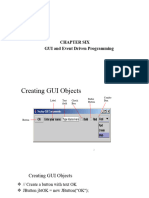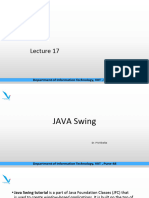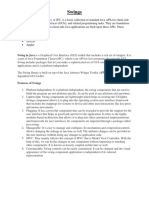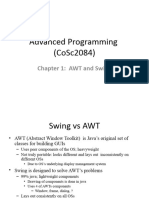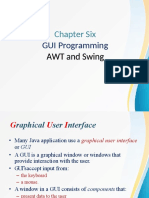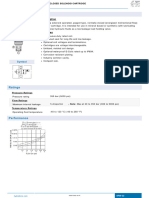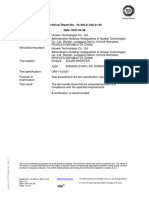0% found this document useful (0 votes)
8 views9 pagesCs315 Advance Java Reviewer
The document outlines the key aspects of user interface design, including UI elements, layouts, and behaviors, as well as various graphical user interface components in Java Swing, such as JFrame, JButton, and JTextField. It details the constructors and functionalities of these components, along with layout managers and event listeners necessary for handling user interactions. Additionally, it explains how to set up components and associate them with event listeners to respond to user actions effectively.
Uploaded by
actualwizardd666Copyright
© © All Rights Reserved
We take content rights seriously. If you suspect this is your content, claim it here.
Available Formats
Download as DOCX, PDF, TXT or read online on Scribd
0% found this document useful (0 votes)
8 views9 pagesCs315 Advance Java Reviewer
The document outlines the key aspects of user interface design, including UI elements, layouts, and behaviors, as well as various graphical user interface components in Java Swing, such as JFrame, JButton, and JTextField. It details the constructors and functionalities of these components, along with layout managers and event listeners necessary for handling user interactions. Additionally, it explains how to set up components and associate them with event listeners to respond to user actions effectively.
Uploaded by
actualwizardd666Copyright
© © All Rights Reserved
We take content rights seriously. If you suspect this is your content, claim it here.
Available Formats
Download as DOCX, PDF, TXT or read online on Scribd
/ 9










